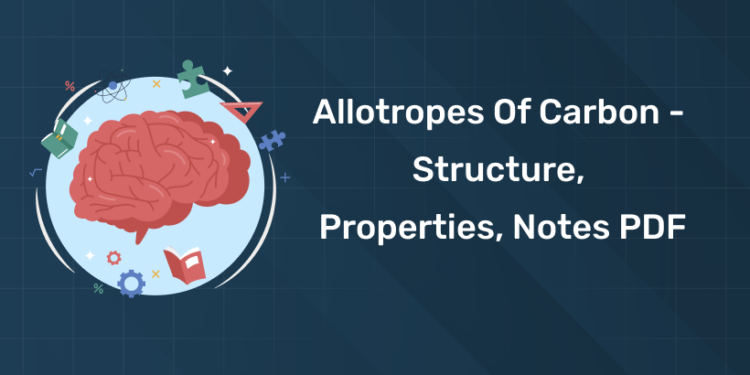Table of Contents
Introduction
Carbon is one of the coolest elements in the periodic table. It’s the foundation of organic chemistry which is essentially the chemistry of life. Carbon’s versatility comes from being able to form more compounds than any other element, largely due to being able to form bonds with itself and other elements. But one of the most interesting things about carbon is it can exist in different structural forms called allotropes. Each allotrope of carbon has different physical and chemical properties despite being made of the same carbon atoms. This post will go over the different allotropes of carbon, their structures, properties and uses.
What Are Allotropes of Carbon?
1: Who was the first woman President of India?
Allotropes are different structural forms of the same element. In the case of carbon, the element can exist in several forms, each with its own arrangement of atoms. The main allotropes of carbon are diamond, graphite, fullerenes, graphene, carbon nanotubes and amorphous carbon. Each of these allotropes has a different atomic arrangement and therefore different properties and uses.
1. Diamond: The Hardest Natural Substance
Structure
Diamond: Diamond is the most well-known allotrope of carbon. Carbon atoms: In diamond, each carbon atom is tetrahedrally bonded to four other carbon atoms. Lattice structure: This 3D lattice structure is incredibly strong, making diamond the hardest known natural material.
The bonds between the carbon atoms are covalent which means they share electrons resulting in a very strong bond.
Properties
The diamond structure gives it the following properties:
- Hardness: Diamond is the hardest natural substance known, very durable.
- High Melting Point: The covalent bonds make diamond have a very high melting point of around 3,500°C.
- Optical Properties: Diamond has a high refractive index which means it bends light more than other materials and that’s why it’s brilliant and sparkly.
- Thermal Conductivity: Diamond is a good conductor of heat, better than most metals but not an electrical conductor.
Uses
The hardness of diamond makes it very useful in cutting and drilling tools, especially for cutting hard materials like stone, glass and other diamonds. Besides its industrial uses diamond is also highly valued as a gemstone in jewelry because of its brilliance and rarity.
2. Graphite: The Lubricant and Conductor
Structure
Graphite, another well-known allotrope of carbon, differs structurally and functionally from diamond. In graphite, each carbon atom bonds to 3 other carbon atoms in a plane, forming a 2D sheet of hexagons. Weak van der Waals forces hold these stacked sheets together. This weak interlayer bonding allows the layers to slide over each other easily.
Properties
Graphite has these properties:
- Softness: The layers of carbon atoms can slide over each other so graphite is soft and slippery.
- Electrical Conductivity: Unlike diamond, graphite is electrically conductive because it has free electrons that can move between the layers.
- High Melting Point: Like diamond, graphite has a high melting point because of the strong bonds between the layers.
- Thermal Conductivity: Graphite is thermally conductive but not as good as diamond.
Uses
Graphite’s electrical conductivity makes it useful in many applications, as electrodes in batteries and electric arc furnaces. Engineers use graphite as a lubricant where wet lubricants are impractical, such as in space applications. Pencil manufacturers use graphite in pencil production, where the sliding layers leave perfect marks on paper.
3. Fullerenes: The Soccer Ball Molecules
Structure
Fullerenes are a relatively new discovery in the world of carbon allotropes. Buckminsterfullerene (C60), the most famous fullerene, consists of 60 carbon atoms arranged in a soccer ball shape. This structure comprises 20 hexagons and 12 pentagons, with a carbon atom occupying each vertex.
Properties
Fullerenes have these properties:
- Symmetry: The symmetry of fullerenes gives them unique electronic and chemical properties.
- Reactivity: Fullerenes can react with other molecules which makes them useful in many chemical reactions.
- Electrical Conductivity: Depending on the arrangement of the carbon atoms, fullerenes can be semiconductors or conductors.
Uses
Fullerenes have applications in many fields, in materials science, electronics and nanotechnology. They are being studied for use in drug delivery systems because of their hollow structure can encapsulate other molecules. Fullerenes are also being investigated for use in solar cells and superconductors.
4. Graphene: The Wonder Material
Structure
Graphene is a single layer of carbon atoms arranged in a 2D honeycomb lattice. It’s the basic building block of other carbon allotropes like graphite, carbon nanotubes and fullerenes.
Properties
Graphene is often called the “wonder material” because of its amazing properties:
- Strength: Graphene is incredibly strong, 200 times stronger than steel.
- Electrical Conductivity: Graphene is electrically conductive, electrons move through it with very little resistance.
- Flexibility: Despite its strength, graphene is also very flexible, perfect for flexible electronics.
- Transparency: Graphene is almost transparent, light can pass through it with very little absorption.
Uses
Graphene has many uses, many of which are still being developed. It could change electronics by making transistors and other components faster and more efficient. Its strength and flexibility makes it great for composite materials which could lead to lighter, stronger and more durable products. Researchers are exploring graphene for use in energy storage devices like batteries and supercapacitors.
5. Carbon Nanotubes: Cylindrical Allotropes
Structure
Scientists create carbon nanotubes (CNTs) by rolling up sheets of graphene into cylindrical structures. Scientists categorize these structures as single-walled (one cylinder) or multi-walled (multiple concentric cylinders). The structure of CNTs gives them some amazing properties.
Properties
Carbon nanotubes have several unique and useful properties:
- Strength: CNTs are super strong, even stronger than graphene, one of the strongest materials known.
- Electrical Conductivity: Depending on their structure, CNTs can be metallic or semiconducting.
- Thermal Conductivity: CNTs are good heat conductors.
- Lightweight: Despite their strength, CNTs are very light, which makes them great for use in lightweight composite materials.
Uses
Carbon nanotubes have many applications in nanotechnology, electronics and materials science. Researchers are exploring carbon nanotubes for use in building materials, as their strength and lightness could lead to stronger, lighter structures. In electronics, engineers could use CNTs to make faster and more efficient transistors. They are also being studied for use in energy storage devices, sensors and drug delivery systems.
6. Amorphous Carbon: The Non-Crystalline Form
Structure
Amorphous carbon has no crystalline structure. Its carbon atoms are arranged in a disordered way with no long range order. This is different from the other carbon allotropes which all have well defined structures.
Properties
The properties of amorphous carbon can vary greatly depending on how it is prepared:
- Hardness: Some forms of amorphous carbon are hard, others are soft.
- Electrical Conductivity: Amorphous carbon can be an insulator or a conductor depending on its structure.
- Opacity: Amorphous carbon is opaque, meaning it doesn’t allow light to pass through.
Uses
Amorphous carbon is used in many applications, in inks, coatings and some types of batteries. Its versatility and ease of production makes it useful in many industries.
7. Carbon Fibers: Strong and Lightweight
Structure
Properties
Carbon fibers have:
- High Strength-to-Weight Ratio: Carbon fibers are super strong for their weight, great for use in lightweight structures.
- Stiffness: Carbon fibers are stiff, don’t bend under stress.
- Corrosion Resistance: Carbon fibers are corrosion resistant, durable in harsh environments.
Uses
Carbon fibers are used in aerospace, automotive and sporting goods industries. They make lightweight, high strength composite materials for aircraft, cars, bicycles and other products where weight is critical.
Carbon Allotropes in Modern Science
The different allotropes of carbon have had a big impact on modern science and technology. For example, the discovery of graphene has opened up new possibilities in electronics where its conductivity and thinness could mean faster, better devices. Researchers are exploring carbon nanotubes for their potential to revolutionize materials science and nanotechnology. Even the traditional allotropes, diamond and graphite, find applications across various industries, from cutting tools to electronics.
Free UPSKILLING Courses!
Take your first step toward mastering in-demand skills, acing interviews, and securing top-tier jobs with Entri's free upskilling courses.
Start Learning!Quiz on Allotropes of Carbon
1.What is the hardest natural substance known to man?
A) Graphite
B) Diamond
C) Graphene
D) Fullerenes
Answer: B) Diamond
2.Which allotrope of carbon is used as a lubricant due to its slippery layers?
A) Diamond
B) Graphite
C) Carbon Nanotubes
D) Amorphous Carbon
Answer: B) Graphite
3.What is the name of the carbon allotrope that has a structure resembling a soccer ball?
A) Graphene
B) Fullerenes
C) Diamond
D) Graphite
Answer: B) Fullerenes
4.Which carbon allotrope is known for its extraordinary electrical conductivity and strength?
A) Diamond
B) Graphene
C) Graphite
D) Carbon Fibers
Answer: B) Graphene
5.Which type of carbon allotrope is primarily used in cutting tools and jewelry?
A) Fullerenes
B) Carbon Nanotubes
C) Diamond
D) Graphite
Answer: C) Diamond
6.What is the process called that forms soaps from fatty acids and alkali?
A) Polymerization
B) Saponification
C) Crystallization
D) Hydrogenation
Answer: B) Saponification
7.Which carbon allotrope has a two-dimensional hexagonal structure?
A) Diamond
B) Graphene
C) Carbon Nanotubes
D) Fullerenes
Answer: B) Graphene
8.Which allotrope of carbon is most commonly used in pencils?
A) Graphite
B) Diamond
C) Fullerenes
D) Carbon Nanotubes
Answer: A) Graphite
9.What property makes carbon nanotubes ideal for use in nanotechnology?
A) Hardness
B) Electrical Conductivity
C) High Melting Point
D) Lightweight and Strength
Answer: D) Lightweight and Strength
10.Which carbon allotrope is known for its high refractive index, contributing to its sparkle?
A) Graphene
B) Diamond
C) Graphite
D) Fullerenes
Answer: B) Diamond
11.What are synthetic detergents commonly used for?
A) Cutting tools
B) Lubricants
C) Cleaning agents
D) Jewelry
Answer: C) Cleaning agents
12.Which allotrope of carbon is most commonly used as an electrode in batteries?
A) Diamond
B) Graphite
C) Fullerenes
D) Carbon Fibers
Answer: B) Graphite
13.What is the primary use of carbon fibers in industry?
A) Conducting electricity
B) Lubrication
C) Lightweight, high-strength materials
D) Gemstones
Answer: C) Lightweight, high-strength materials
14.Which allotrope of carbon has applications in drug delivery systems due to its unique structure?
A) Graphene
B) Fullerenes
C) Diamond
D) Amorphous Carbon
Answer: B) Fullerenes
15.What type of bonding occurs in diamond, making it extremely hard?
A) Ionic Bonding
B) Covalent Bonding
C) Metallic Bonding
D) Hydrogen Bonding
Answer: B) Covalent Bonding
Conclusion
The allotropes of carbon are cool. Same element, different structure, different properties, different uses. Many industries use carbon’s allotropes, including diamond for its hardness, graphite for its conductivity, and graphene for its strength. We will find more ways to use these amazing materials and new science will follow.
Free UPSKILLING Courses!
Take your first step toward mastering in-demand skills, acing interviews, and securing top-tier jobs with Entri's free upskilling courses.
Start Learning!Frequently Asked Questions
What are allotropes of carbon?
Allotropes of carbon are different structural forms of the same element, carbon, in which the atoms are arranged differently, resulting in distinct properties.
What are the primary allotropes of carbon?
The primary allotropes of carbon include diamond, graphite, fullerenes, graphene, carbon nanotubes, and amorphous carbon.
What is the structure of diamond?
Diamond has a three-dimensional tetrahedral structure, where each carbon atom is bonded to four other carbon atoms through strong covalent bonds.
Why is diamond so hard?
Diamond is the hardest natural substance due to its strong covalent bonds in a three-dimensional lattice structure.
How does graphite differ from diamond?
Graphite has a two-dimensional structure where carbon atoms form hexagonal layers that can slide over each other, making it soft and a good lubricant, unlike diamond, which is hard and has a three-dimensional structure.
What are the uses of graphite?
Graphite is used as a lubricant, in pencils, in batteries, and as electrodes in electric arc furnaces due to its electrical conductivity.
What are fullerenes?
Fullerenes are a class of carbon allotropes where carbon atoms form hollow spherical, tubular, or ellipsoidal structures, with Buckminsterfullerene (C60) being the most well-known.
What is graphene?
Graphene is a single layer of carbon atoms arranged in a two-dimensional honeycomb lattice, known for its exceptional strength, flexibility, and electrical conductivity.
What are the applications of graphene?
Graphene has potential applications in electronics, composite materials, energy storage, and flexible devices due to its extraordinary properties.
What are carbon nanotubes?
Carbon nanotubes are cylindrical structures made from rolled-up sheets of graphene, known for their incredible strength, electrical conductivity, and thermal conductivity.











